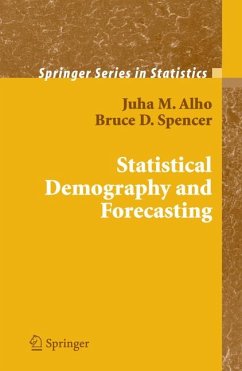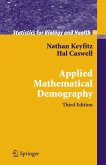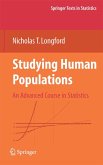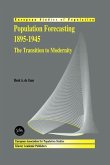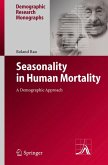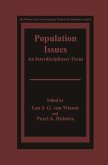For statisticians the book provides a unique introduction to demographic problems in a familiar language. For demographers, actuaries, epidemiologists, and professionals in related fields, the book presents a unified statistical outlook on both classical methods of demography and recent developments. To facilitate its classroom use, exercises are included. Over half of the book is readily accessible to undergraduates, but more maturity may be required to benefit fully from the complete text. Knowledge of differential and integral calculus, matrix algebra, basic probability theory, and regression analysis is assumed.
Juha M. Alho is Professor of Statistics, University of Joensuu, Finland, and Bruce D. Spencer is Professor of Statistics and Faculty Fellow at the Institute for Policy Research, Northwestern University. Both have contributed extensively to statistical demography and served in advisory roles and as statistical consultants in the field.
Dieser Download kann aus rechtlichen Gründen nur mit Rechnungsadresse in A, B, BG, CY, CZ, D, DK, EW, E, FIN, F, GR, HR, H, IRL, I, LT, L, LR, M, NL, PL, P, R, S, SLO, SK ausgeliefert werden.
Hinweis: Dieser Artikel kann nur an eine deutsche Lieferadresse ausgeliefert werden.
"The book will be useful for teachers, researchers and consultants dealing with formulation of statistical models, estimation and forecasting in demography. Those interested in deeper understanding of a particular issue will find a good number of references from journals and reports published during the last ten years." Population Review, Vol. 44, No. 2, Section 3, 2005
"This book is a most useful guide to the literature intersecting demography and statistics. ... the book is of almost encyclopedic coverage of topics; almost any conceivable demography related problem area at least is mentioned. References and indices are impressive also. Due to the wide coverage the book will be a good buy for any statistics library." (Götz Uebe, Allgemeines Statistisches Archiv, Issue 3, 2006)
"The new book by Alho and Spencer is focused on putting a better emphasis on statistics in the discipline of demography ... . The authors are both statisticians, so the focus is on statistics as used for demographic problems. The authors are targeting human applications, so their perspective on science does not extend any further than epidemiology. The book actually strikes a good balance between statistical tools and demographic applications." (Technometrics, Vol. 48 (3), 2006)
"This book contains extensive discussions on various issues in demography with emphasis on the application of statistical models ... . the topics are introduced lucidly and are accompanied by more than 150 illustrative examples and 33 figures. The empirical examples highlight interesting problems in demography and add substantially to the usefulness of the book. ... The book will be extremely useful to a statistician who wants to learn about demographic problems ... . It is also highly recommended for demographers, actuaries, epidemiologists ... ." (Mausumi Bose, Sankhya, Vol. 68 (2), 2006)
"This book is well written and interestingto read, with a good mixture of theory and applications. ...[It] is a must buy for every statistician interested in demography and every demographer interestd in expanding his knowledge of statistical methodology." (Andreas Karlsson, Psychometrika, Vol. 72, No. 2, June 2007)

